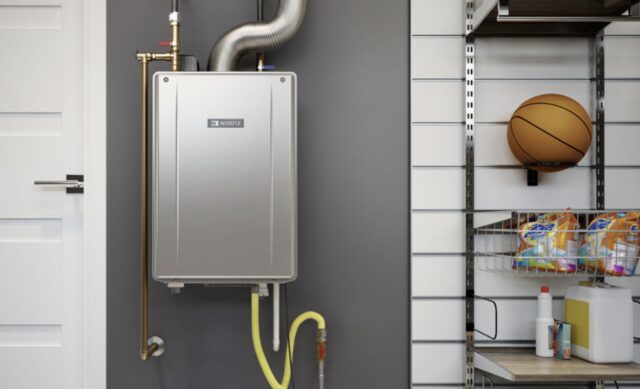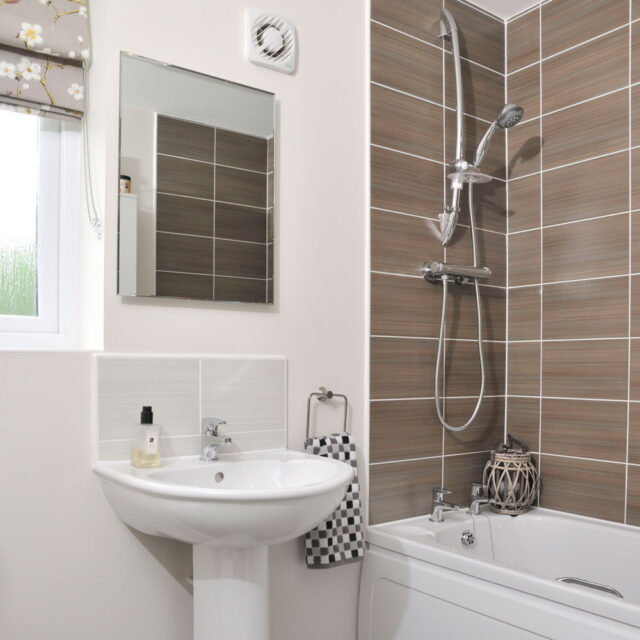
Before jumping right into how to clean a tankless water heater, let’s get to understand it. A tankless water heater as the name states does not have a storage tank. It’s only a small device connected to heat water.
Tankless water heaters like tank water heaters need maintenance and flushing. The standard period for flushing a tankless water heater is once per year. But, there are some conditions like water quality that may cause you to flush a bit more. You could use a sediment trap or water softener to a certain point. Afterward, you may be required to flush your heater.
You also need to know about an isolation valve. This allows you to restrict any liquid or gas supply of your pipeline without closing the entire chain. It is like the shut-off valve in toilets and stoves.
How to flush a tankless water heater
Before you begin, you need a pump and flushing kit. A submersible pump helps you save time since you don’t have a large capacity of water to sweep up and pull sediments out.
You also need a bucket that the pump can fit into. This is because there’s no simple drainage option compared to the normal tank water heaters. For the same reason, that’s why you need a submersible pump.
A good flushing kit contains a pump, bucket, descaler, and hoses. Before flushing any tankless water heater, check the user manual for the flushing process (not in all). There are many tankless water heaters at Shower Insider but most are flushed the same way. However, the difference comes in gas and electric water heaters.
Flushing a gas tankless water heater
1. Preparation stage
- Put off electricity supply to the heater.
- Remove the access panel and make sure there’s power leading to the terminal.
- Close the gas isolation valve.
- Close the hot and cold shut-off valves to prevent any water from getting into the unit while you work.
- Release any pressure in the hot water pressure relief valve along the hot water line.
- Connect hoses to both the cold water service port and hot water service port.
- Place your submersible pump into a bucket.
- Connect the cold water hose to your pump.
- Place the free end of the hot water hose into the bucket.
- Pour undiluted virgin food-grade white vinegar into the bucket.
2. Flushing:

- Open the hot and cold service ports and turn on the pump.
- Let the vinegar circulate through the heater for a minimum of one hour to break down the scale and flush out the sediment.
- Turn off the pump and pour the vinegar.
- Close the cold water service port and remove the hose.
- Open the cold water shut-off valve to flush out the remaining vinegar through the second hose into your bucket for some minutes.
- Close the cold water shut-off valve.
- Let the water finish draining and remove the second hose.
- Close the hot water service port.
- Remove the cold water inlet filter and (if present) hot water in-line filter.
- Flush the filters to remove any trapped sediment
3. Cleanup:
- Replace the filters and open the hot and cold water shut-off valves.
- Return the access panel.
- Open the gas shut-off valve.
- Reconnect the electrical supply.
- Electric tankless water heaters
4. Preparation:
- Shut off the electrical power at the breaker.
- Shut the cold water shut-off valve.
- Open faucets to let water drain from the heater.
- Close hot water shut-off valve.
- Remove the access panel and make sure there’s no longer power leading to the terminal.
- Remove screws that secure the wires to the heating elements.
- Loosen the brass top of the heating element to remove the heating element. Check whether they are in good condition. If not, request for repair.
Store the heating elements in the cooper chambers of the heater so that they can also be cleaned.
5. Flushing:
- Fill the cooper chambers with undiluted virgin food-grade white vinegar.
- Allow the vinegar to sit in the chamber for 90 minutes to two hours. This will break up any scale on the elements.
- Drain the vinegar.
- Replace the heating elements and re-secure the wires.
- Open the cold water shut-off valve and let the tank fill up.
- Examine the tank for any signs of leaks (the paper towel test works wonders here).
- Open the hot water shut-off valve.
- Turn on several hot water faucets to let the water run for about five minutes to flush out the vinegar and clear any air pockets from the line.
6. Cleanup:
- Turn hot water taps.
- Close the cold water shut-off valve.
- Remove the cold water inlet filter and flush it under a cold tap to remove any debris.
- Replace the filter.
- Close the access panel and restore power at the breaker.
Conclusion
The same way tank water heaters are flushed, tankless water heaters should also be flushed. This improves efficiency and saves energy used in heating the water.







